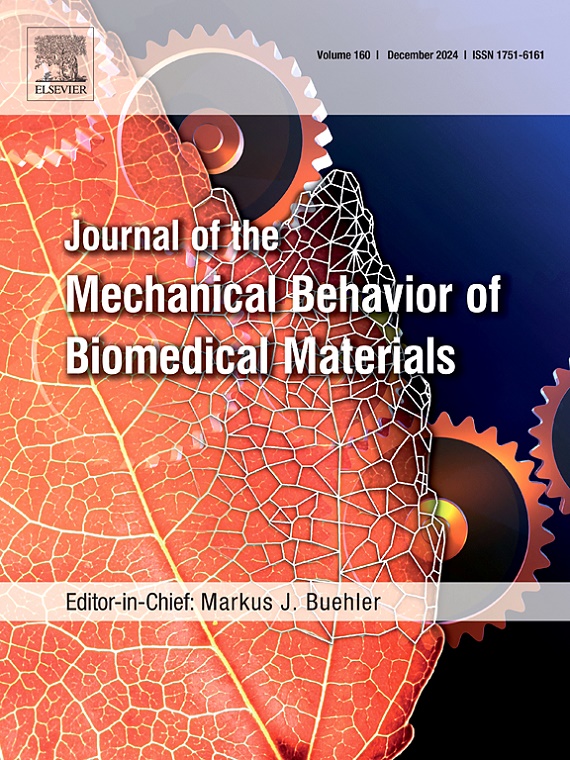A bioreactor for in vitro studies of lymphatic endothelial cells with simultaneous fluid shear stress and membrane strain
IF 3.3
2区 医学
Q2 ENGINEERING, BIOMEDICAL
Journal of the Mechanical Behavior of Biomedical Materials
Pub Date : 2025-01-31
DOI:10.1016/j.jmbbm.2025.106909
引用次数: 0
Abstract
Reproducing the in vivo physiologic conditions and biomechanical environment to stimulate natural growth and behavior of lymphatic endothelial cells (LECs) is critical in studying the lymphatic system and its response to stimuli. In vitro studies that deconstruct the biomechanical environment, e.g. independently incorporate flow-induced shear stress or membrane strain have demonstrated the significance of mechanotransduction in LECs (and vascular endothelial cells). Such studies have facilitated the investigation of intracellular signaling pathways stimulated by a particular mechanical cue but do not accurately reproduce natural physiologic behavior of in vivo LECs given the absence of other natural mechanical cues. In this study, we present a novel experimental device designed to reconstruct the in vivo biomechanical environment, i.e. a device that enables the simultaneous application of flow-induced shear stress and cyclic stretching of LECs in vitro. The device is uniquely capable of simulating physiologically-relevant conditions for lymphatic endothelial cells, such as low-flow, high-strain scenarios. Using this device, we observed that, like vascular ECs, LECs aligned in the direction of fluid shear stress when steady flow was applied. In our case the behavior was observed under conditions closer to the physiological mean flow in the lymphatic vessels than vascular levels of shear stress. When concurrent cyclic stretching was applied, the alignment in the direction of flow and perpendicular to the uniaxial stretch was detected in a substantially shortened timeframe. Additionally, the distribution of alignment angles was more closely clustered around 90° under the flow/stretch scenario after 6 h than the 24 h flow only scenario, perhaps indicating a greater sensitivity to cyclic stretching than to fluid shear stress in the morphological alignment response of LECs. We also observed alignment of cell nuclei and F-actin filaments in Human Dermal Lymphatic Endothelial Cells (HDLECs) after only 6 h of combined flow and stretch. These observations underscore the importance of including both sources of mechanical stress when studying the growth and behavior of LECs.
求助全文
约1分钟内获得全文
求助全文
来源期刊

Journal of the Mechanical Behavior of Biomedical Materials
工程技术-材料科学:生物材料
CiteScore
7.20
自引率
7.70%
发文量
505
审稿时长
46 days
期刊介绍:
The Journal of the Mechanical Behavior of Biomedical Materials is concerned with the mechanical deformation, damage and failure under applied forces, of biological material (at the tissue, cellular and molecular levels) and of biomaterials, i.e. those materials which are designed to mimic or replace biological materials.
The primary focus of the journal is the synthesis of materials science, biology, and medical and dental science. Reports of fundamental scientific investigations are welcome, as are articles concerned with the practical application of materials in medical devices. Both experimental and theoretical work is of interest; theoretical papers will normally include comparison of predictions with experimental data, though we recognize that this may not always be appropriate. The journal also publishes technical notes concerned with emerging experimental or theoretical techniques, letters to the editor and, by invitation, review articles and papers describing existing techniques for the benefit of an interdisciplinary readership.
 求助内容:
求助内容: 应助结果提醒方式:
应助结果提醒方式:


